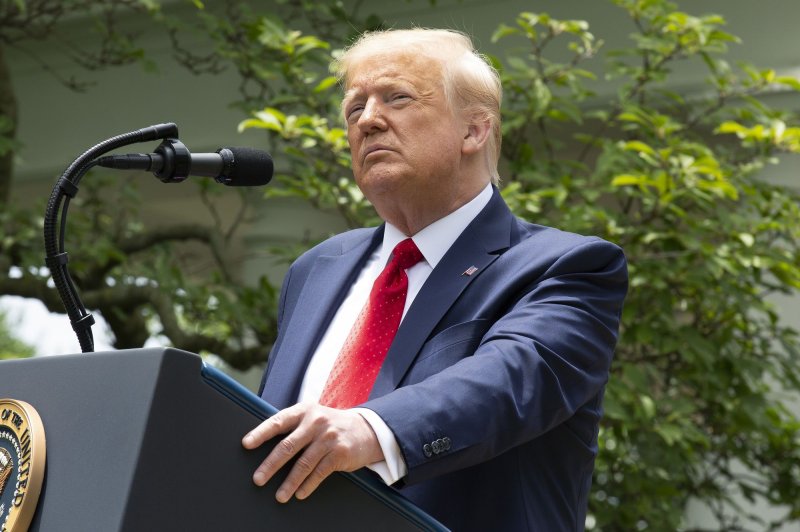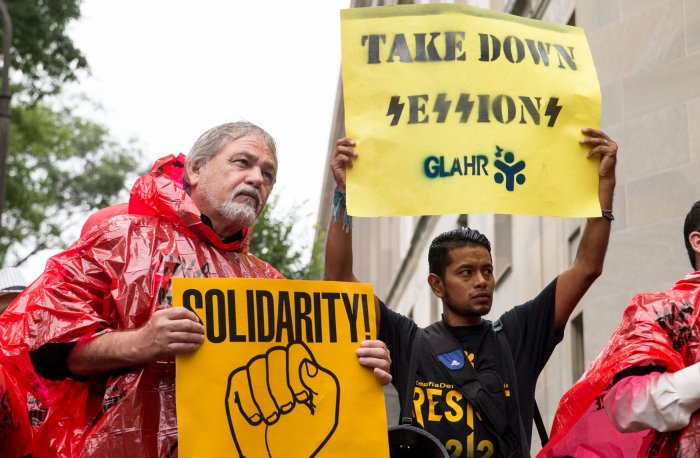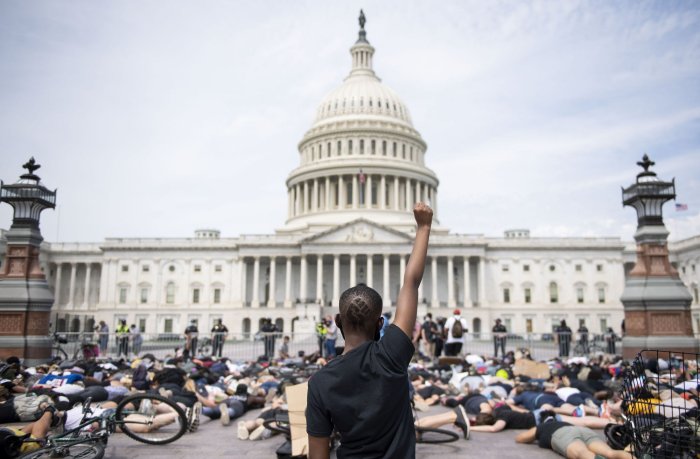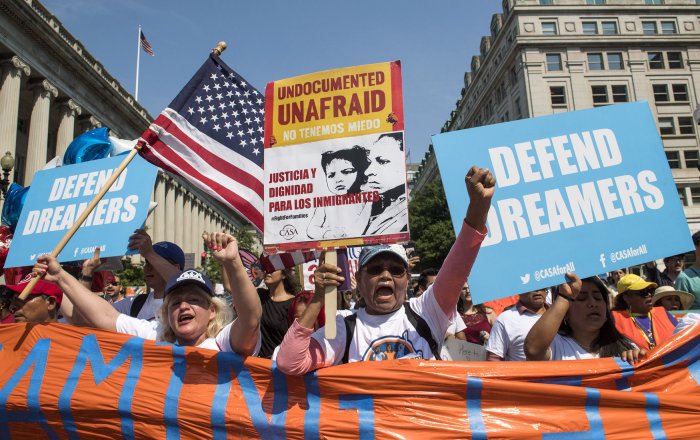The woman identified herself as Sheila Buck, a resident of Tulsa, and said she had a ticket to the rally.
SHE SAID SHE WAS KNEELING AND PRAYING
(A CHRISTIAN TRADITION)
Lauren StrapagielBuzzFeed News Reporter
Posted on June 20, 2020
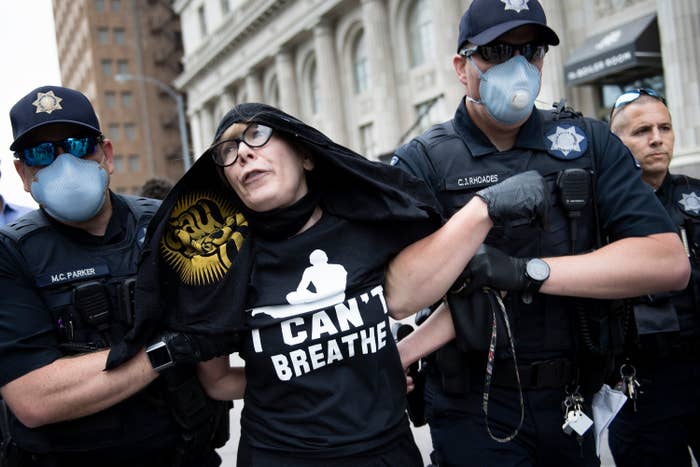
Brendan Smialowski / Getty Images
Tulsa Police take Sheila Buck into custody.
A women wearing a shirt that said "I can't breathe" was handcuffed and physically removed from the grounds of the rally for President Donald Trump in Tulsa on Saturday, apparently at the request of campaign staff.
MSNBC was broadcasting live from outside the BOK Center when Tulsa police officers approached the woman, who was sitting on the ground. One officer leaned down and told her to leave and that if she didn't, they would remove her.
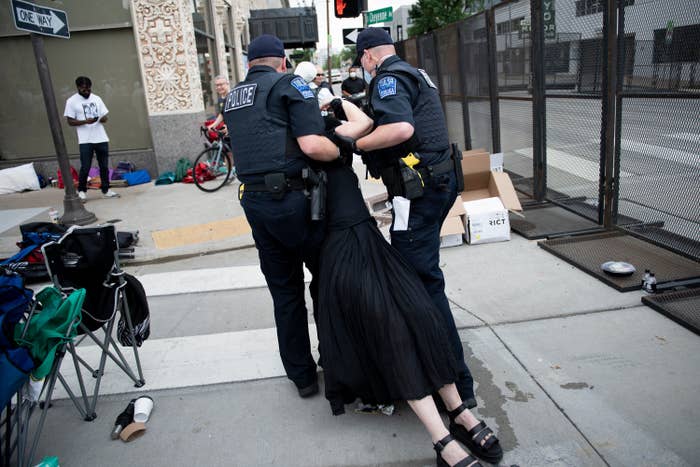
Brendan Smialowski / Getty Images
"I have a ticket," she told the officer.
"We're going to put handcuffs on you," he then tells her.
A moment later, the officer along with another lifted her by the arms, took her a short distance away, and put handcuffs on her.

MSNBC@MSNBC
"Somebody has to do this." A peaceful protester is arrested outside the location President Trump's rally will be held in Tulsa, Oklahoma, on Saturday.04:33 PM - 20 Jun 2020
Reply Retweet Favorite
"They're arresting me! They're arresting me!" the woman said to media following the officers as they handcuffed her. "I've done nothing, I have tickets to this thing."
According to the MSNBC reporter, the woman was not impeding access at the rally.
Police then led her away from the scene as media with cameras followed. She told MSNBC the officers told her she was trespassing and breaking the law. She also said she wasn't with an organized group and came to the rally because of "what's happening" and identified herself as Sheila Buck, a resident of Tulsa.
In a post on Facebook, the Tulsa Police Department said they made the arrest at the request of Trump campaign staff.
Facebook: tulsapolice
"Tulsa Police spoke to the arrestee, Ms. Buck, for several minutes trying to convince her to leave on her own accord. After several minutes requesting her to leave she continued to refuse to cooperate and was escorted out of the area and transported to booking for obstruction," the post said.
The police department later wrote on Twitter that Buck was in a private area.
"For clarification, the arrestee had passed through the metal detector area to the most secure area of the event accessible only to ticket holders. Whether she had a ticket or not for the event is not a contributing factor for the Tulsa Police in making the arrest. Officers at the location, particularly in the 'Sterile' area, will remove individuals only at the direction of Campaign Staff," the tweet read.

Tulsa Police@TulsaPolice
***UPDATE*** There is some confusion about the area Ms. Buck was arrested. Ms. Buck was in an area that is considered a private event area and the event organizer, in this case the Trump Campaign, can have people removed at their discretion.06:41 PM - 20 Jun 2020
Reply Retweet Favorite
A woman who said she has been friends with Buck for more than 20 years, Dr. Casey Jordan, told BuzzFeed News that Buck, 62, is a retired elementary school art teacher who worked with "at-risk" kids. Jordan also said Buck isn't affiliated with any activist groups — "she's just sick of police overreaction."
"Sheila is one of the most strong-headed, independent thinking people I’ve ever met," said Jordan, who added Buck grew up on a farm out of state.
"This is something Sheila would have woken up today and decided to do," she said.
The last Jordan heard, Buck was still in holding and being "evaluated" by police.
This is a developing story. Check back for updates and follow BuzzFeed News on Twitter.

Lauren Strapagiel is a reporter for BuzzFeed News and is based in Toronto, Canada.

Lauren Strapagiel is a reporter for BuzzFeed News and is based in Toronto, Canada.

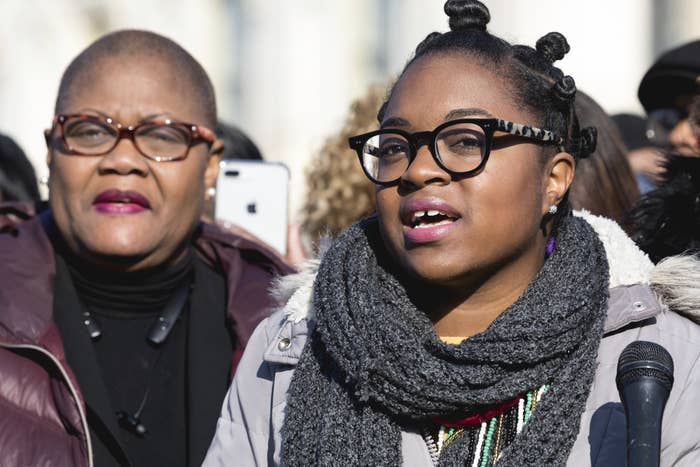
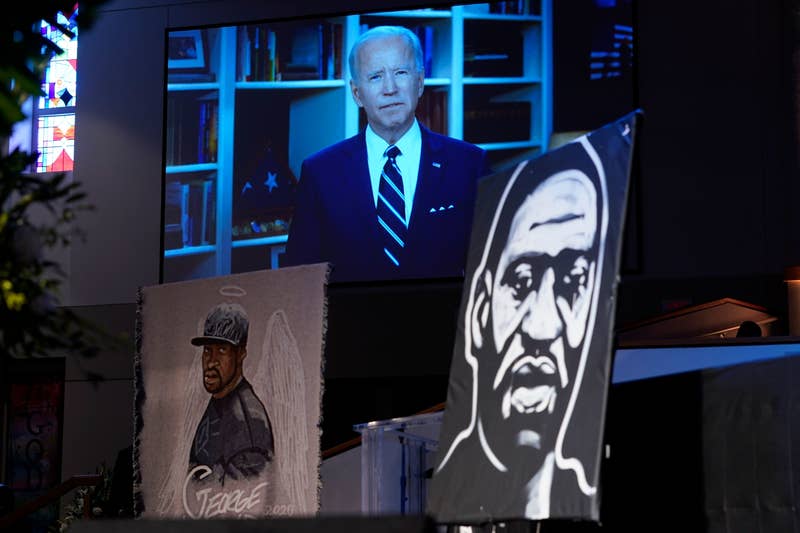
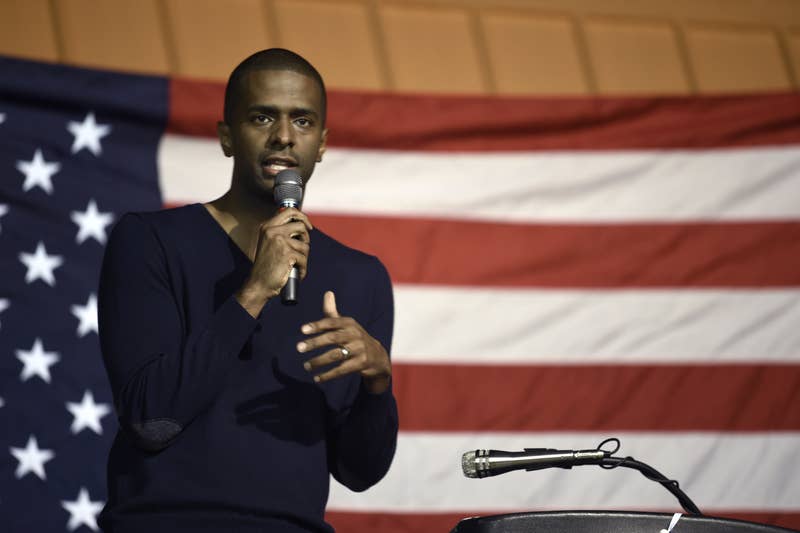
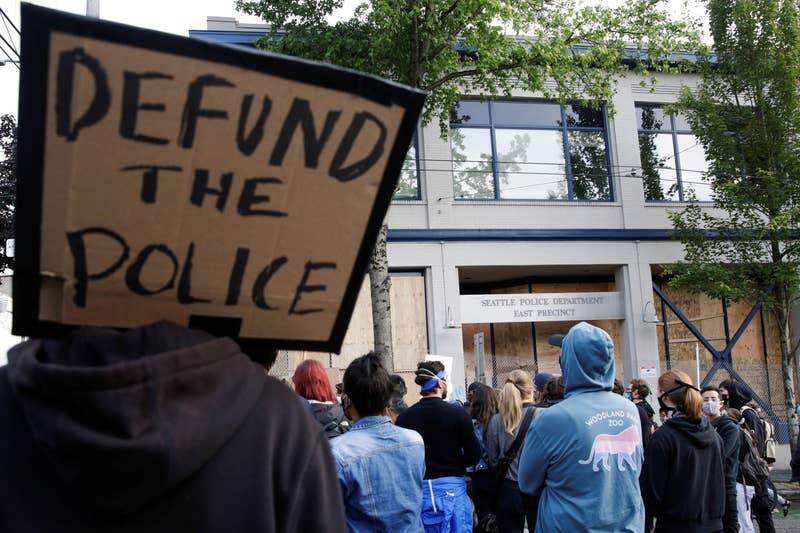

 Ryan BrooksBuzzFeed News Reporter
Ryan BrooksBuzzFeed News Reporter Nidhi PrakashBuzzFeed News Reporter
Nidhi PrakashBuzzFeed News Reporter





















